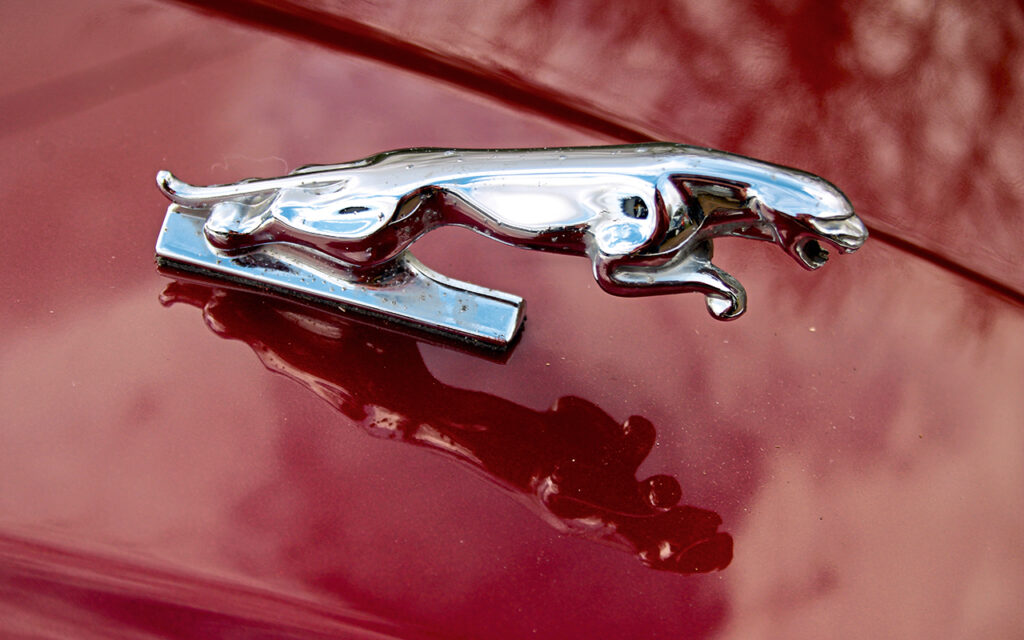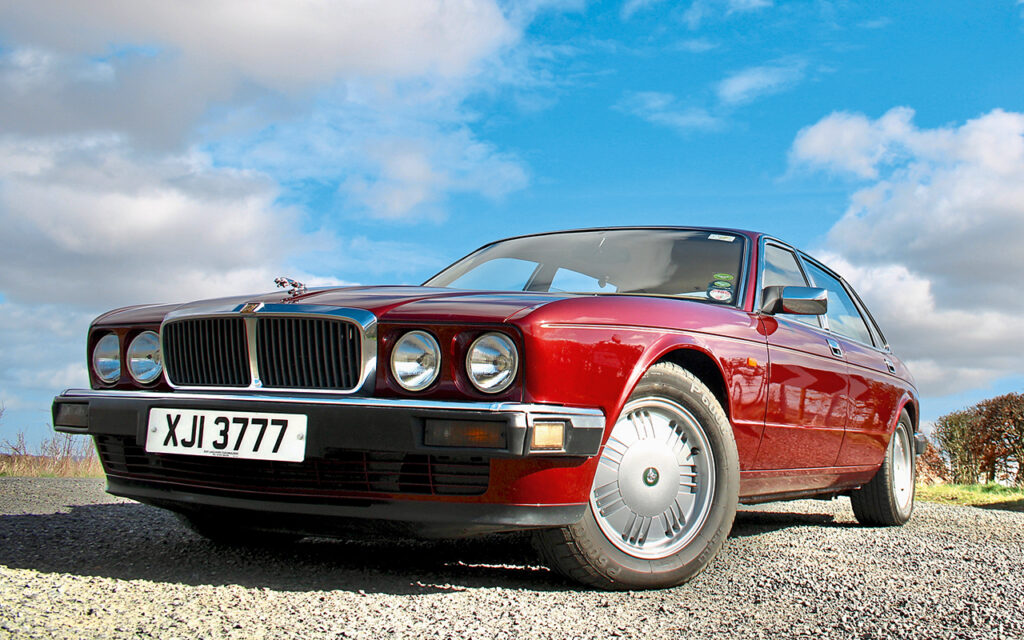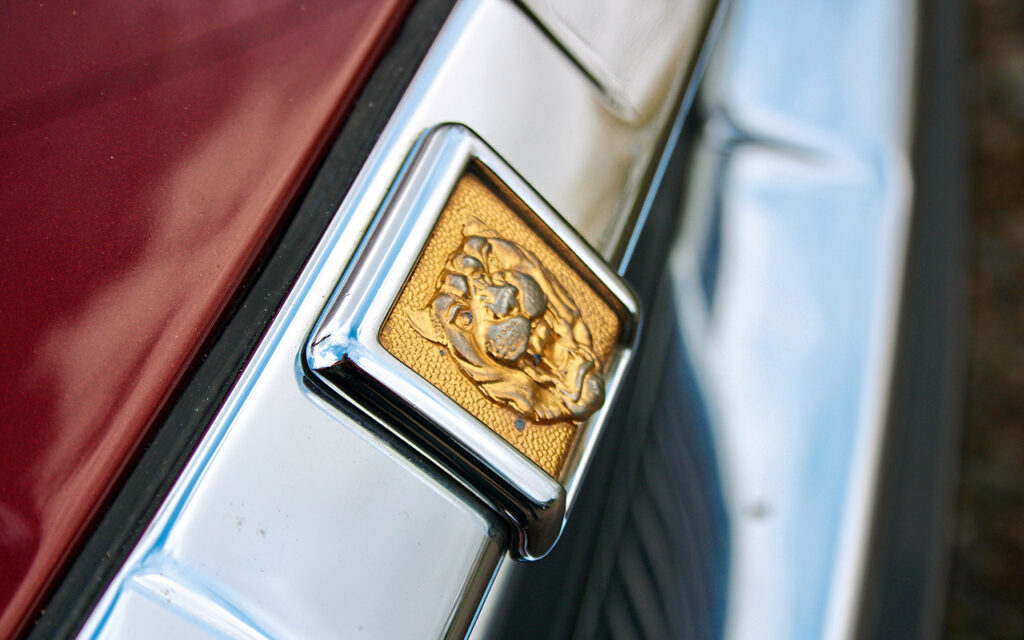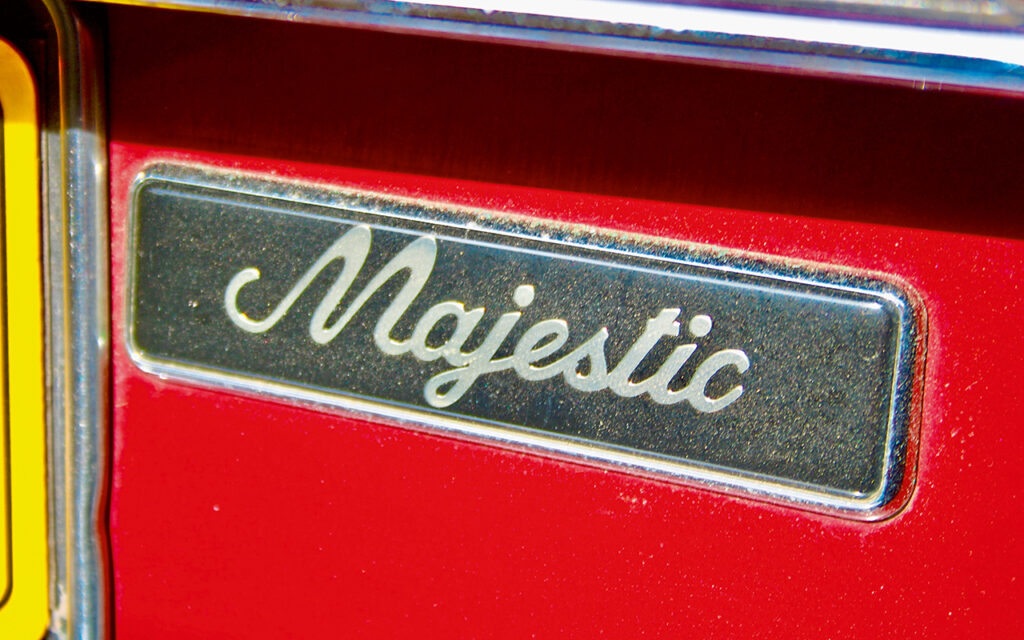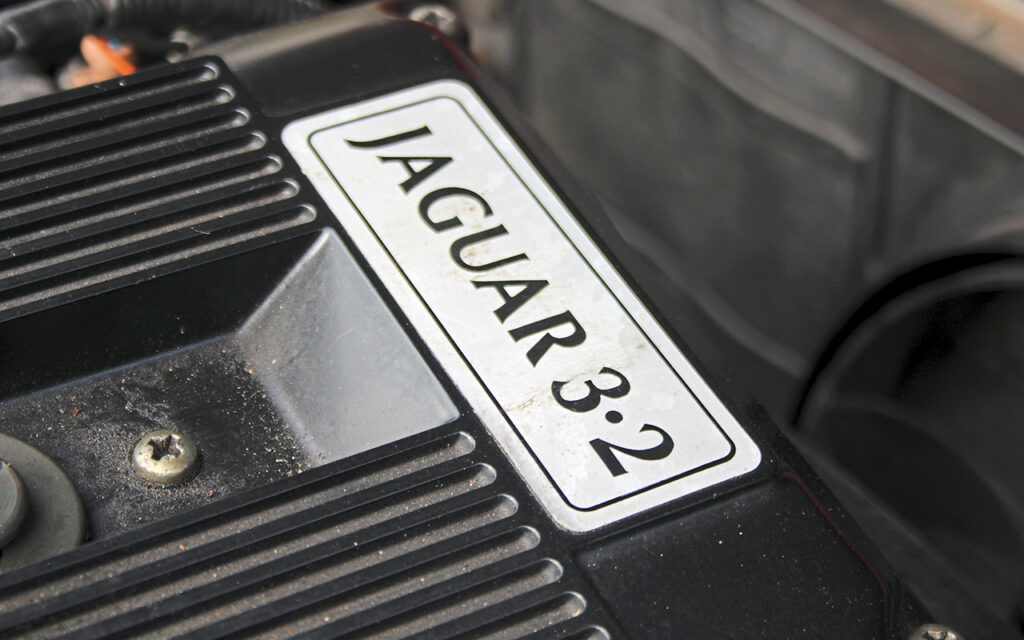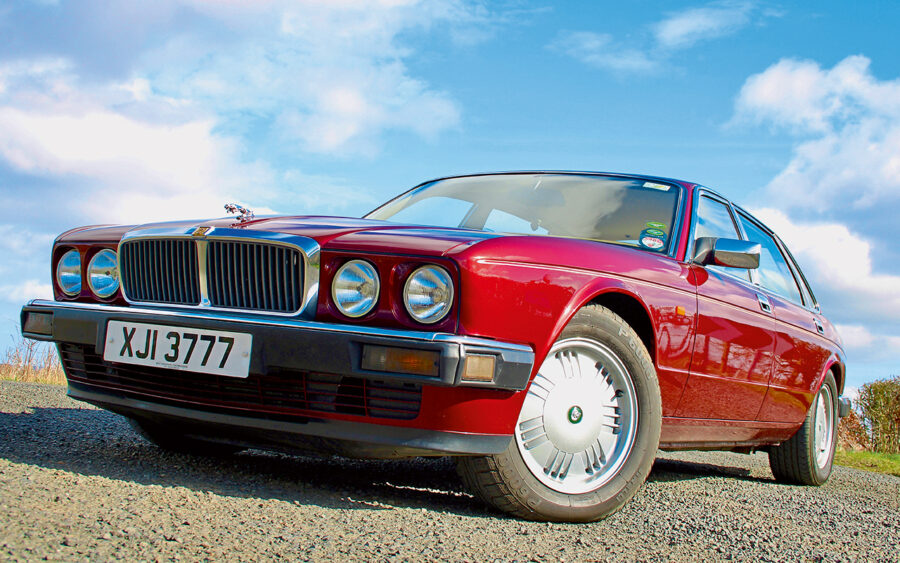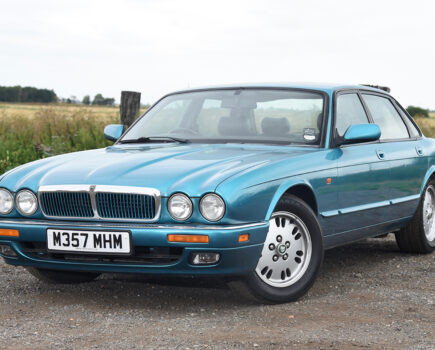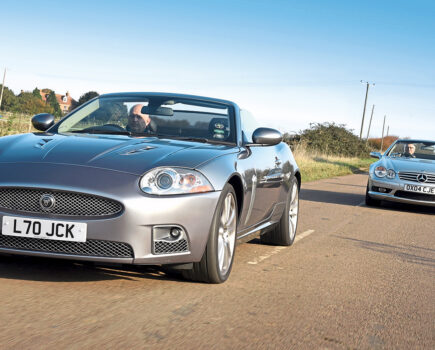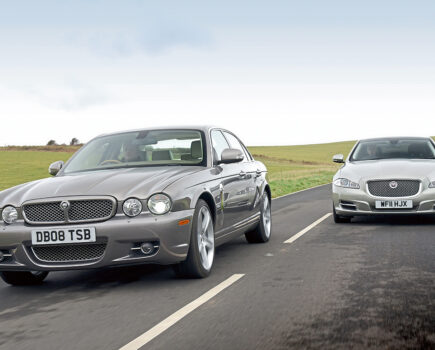This Jaguar XJ40 is a one-off, long-wheelbase, AJ6-powered special with a rather grand name – Gold Majestic
Words: Craig Cheetham
The introduction of a 3.2-litre variant of the Advanced Jaguar Six-cylinder engine (AJ6) was a more seismic event than many realise, since it marked a significant shift in Jaguar’s sales patterns.
Previously, the XJ40 had been offered with two engine choices – a single-cam 2.9-litre and a 3.6-litre twin-cam version of the original AJ6 block. But in 1990, things changed. The unpopular SOHC unit, which accounted for little more than 15 percent of XJ40 sales, was dropped and replaced by a new 3.2-litre DOHC powerplant, while the 3.6-litre engine was supplanted by a 4.0-litre unit befitting of the more upmarket models in the Jaguar and Daimler line-up.
The new 3.2 was hugely significant. Not only did it make the entry-level XJ40 a much more palatable proposition, with a perky 201bhp in lieu of the outgoing model’s rather paltry 148bhp (which struggled to haul around the XJ40’s weight), but it also became the most popular powerplant in the XJ saloon line up. Whereas more than 80 percent of the earlier cars were 3.6s and the bigger of the two engines ruled the roost, more than 70 percent of those sold in the Nineties (other than in the USA) were 3.2s, with the 4.0-litre generally only putting in an appearance at the higher end of the model range.
The 3.2 differed quite significantly from earlier engines insofar as it used a new 24-valve head with twin overhead camshafts. It was essentially a shorter-stroke version of the 4.0-litre unit that had appeared the year before and it offered a sensible balance between efficiency and performance. Driven sensibly, a fuel economy figure in the high 20s was easily attainable, while the 0-60mph time was reduced from 10.8 to 8.8 seconds, with far more mid-range responsiveness to boot. It’s no surprise, then, that the 3.2 became so universally popular.
The AJ6 engine would go on to evolve into the AJ16 for the launch of the X300 in late 1994, with a new engine management system, distributorless ignition and magnesium alloy valve covers, but the engine was essentially the same and remained in service until Jaguar launched its new AJV8 engines in 1997. It wasn’t only Jaguar that used it, either, with a supercharged variant of the AJ6 powering the Aston Martin DB7.
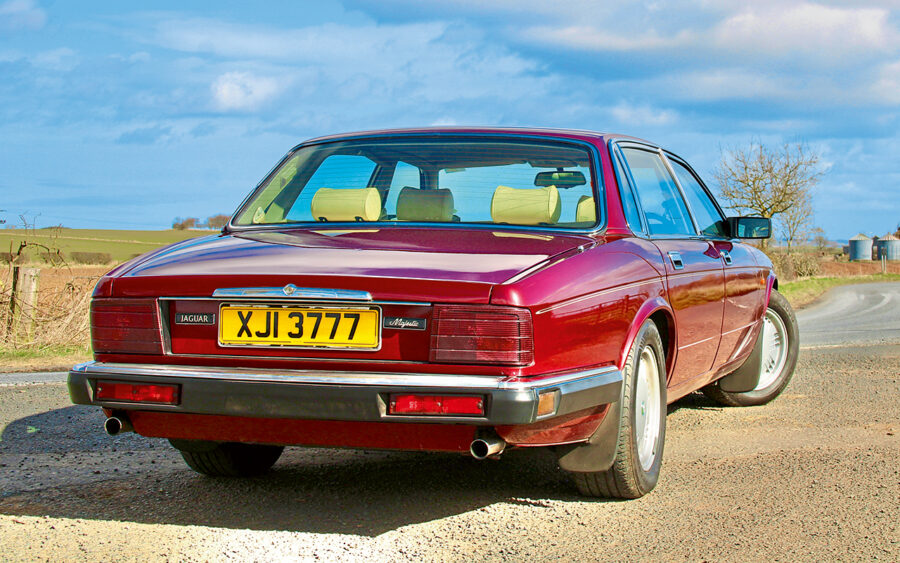
One of the nicest models to feature the 3.2-litre AJ6 was the XJ40 Gold, introduced in 1994 as a run-out model to help shift the last few cars off the line. The Gold was essentially a base model XJ40, but with a few desirable extras, such as Magnolia leather, metallic paint (the vast majority of them being Regency Red), unique trim and Kiwi alloy wheels. A gold twin coachline and gold-tinted Growler badges marked the car out as the special edition.
And that’s what we have here – up to a point. This 1994 example is immediately identifiable as a Gold by its bespoke Growler radiator badge, twin headlamps and pinstripe, but it’s also longer than any other XJ40 Gold and has Aero alloys instead of Kiwis. And that’s because it’s a one-off. The car was tracked down by XJ40 enthusiast Rob Jenner, who has amassed a collection of unusual and one-off XJs over the years, including a number of Majestics, this being one of the most unusual.
It’s the only Gold Majestic 3.2 that was ever made – an XJ40 Gold with some luxury extras and an unusually long body. The Majestic models aren’t to be confused with standard LWB cars, such as the majority of XJ12s, but were bespoke, hand-finished cars that were taken off the line and stretched by Project Aerospace, in Coventry, before being shipped back to Browns Lane, where they were hand-finished by Jaguar’s Special Vehicle Operations (SVO) department.
The extra length gave the Majestic a more spacious rear cabin, making it ideal for chauffeur-driven owners – and that was how this car started its life. Its original registration number was ‘1NH’, allocated to the mayor of Northampton, and the numberplates still live in the boot. This was the only 3.2 Gold Majestic built by SVO, and why the mayor (or the council) chose such an unusual specification isn’t known for certain, but we’d assume it was down to taxpayer funds and not wanting to splash out the extra for a Sovereign. After all, it’s an extremely pleasant car even in Gold form, with manual air conditioning and non-electric seats, neither of which was a massive inconvenience to those in the rear.
According to Rob’s research, which involved close scrutiny of the build records held at Jaguar Heritage, the car is one of only 270 Majestic models built, of which only 71 were right-hand drive. It’s one of only four Regency Red Majestics, and the only known Gold Majestic 3.2, which gives it some unique provenance.
And, before anyone writes in about the Leaper on the bonnet being an unnecessary addition, please bear with us. This has a story of its own.
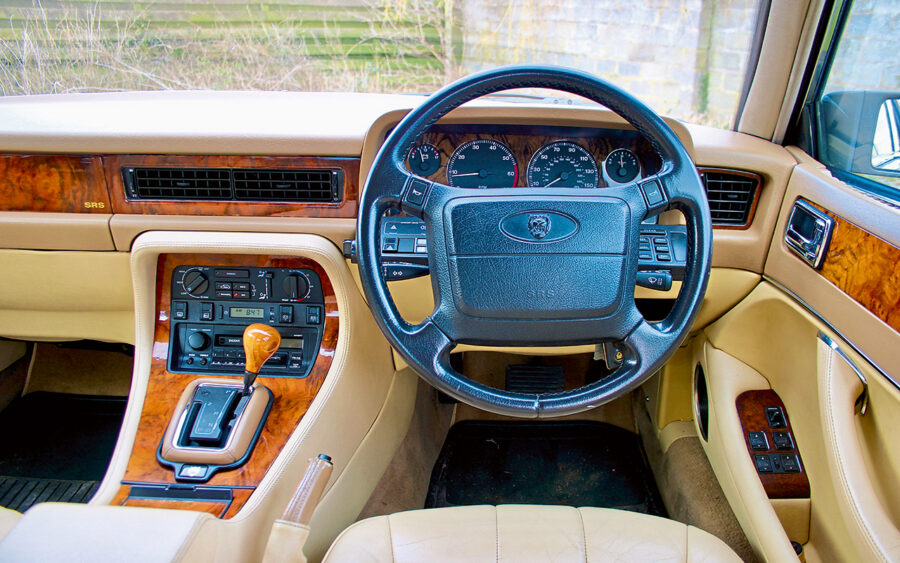
Beneath the bonnet ornament – a common but non-standard modification on many an XJ40 – is a slot into which the car’s genuine Jaguar flag base can be slotted. The brass flag carrier – originally a £350 factory option – lives in the car’s glove compartment and simply clips into place with the Leaper removed. When the car was being used for mayoral duties, it was, therefore, a quick and easy job to attached the civil insignia to the front of the XJ as it went about its processional tasks. Yet once completed, it could be put back into ‘stealth mode’ so that it could be driven around as if it were just a normal Jaguar, with only the truly eagle-eyed being able to spot its extra length or interpret the meaning of the ‘Majestic’ badge on the bootlid.
On the road, the 118,000-mile car drives superbly well for one that hasn’t lived in shelter all its life. Indeed, aside from the extra length, which you need to be aware of when reversing in and out of spaces, it’s no different to a normal 3.2 XJ40, which means it’s responsive without being hugely rapid, with a delicate balance between ride quality and impressive handling, the likes of which are Jaguar hallmarks that cannot be bettered. The Majestic is an XJ40 that’s designed to be as rewarding for the chauffeur as it is for the individual being driven around, and it’s a balance that works brilliantly.
More than that, though, this is a car the like of which will never emerge from Jaguar again. It was built under Ford ownership, but is indicative of a model developed by a standalone company – the bespoke SVO element and use of a local coachbuilder to lengthen it being anachronisms that hark back to when Jaguar was small and dynamic enough to create cars built to what were, essentially, individual commissions, rather than the giant multinational company it has become part of in recent years.
It’s ironic, then, that this Gold Majestic car – on the one hand the most exclusive of Jaguars and arguably the least majestic Majestic they built – is equipped with what was its most commercially successful engine ever at the time.
